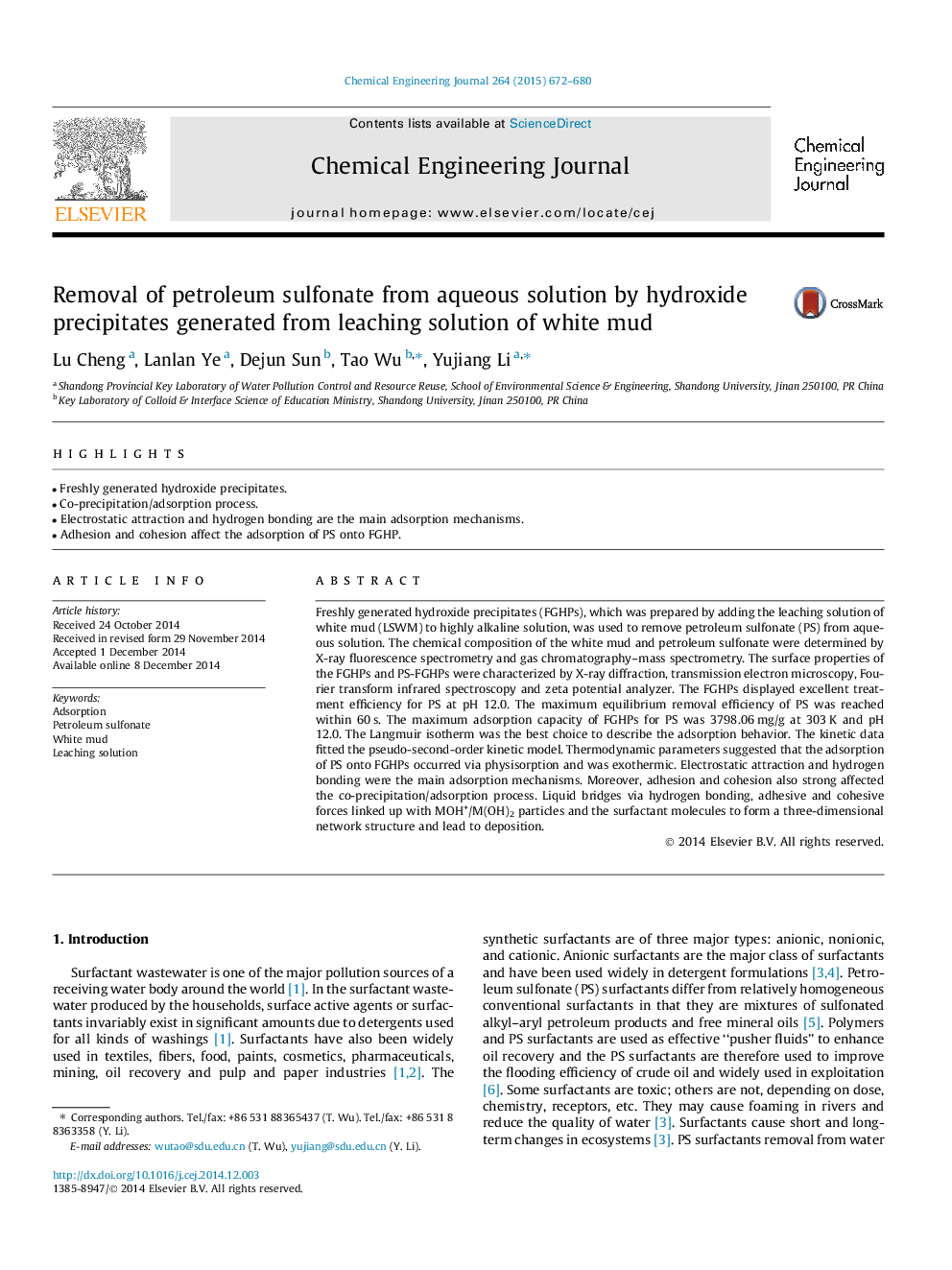| کد مقاله | کد نشریه | سال انتشار | مقاله انگلیسی | نسخه تمام متن |
|---|---|---|---|---|
| 146866 | 456379 | 2015 | 9 صفحه PDF | دانلود رایگان |
• Freshly generated hydroxide precipitates.
• Co-precipitation/adsorption process.
• Electrostatic attraction and hydrogen bonding are the main adsorption mechanisms.
• Adhesion and cohesion affect the adsorption of PS onto FGHP.
Freshly generated hydroxide precipitates (FGHPs), which was prepared by adding the leaching solution of white mud (LSWM) to highly alkaline solution, was used to remove petroleum sulfonate (PS) from aqueous solution. The chemical composition of the white mud and petroleum sulfonate were determined by X-ray fluorescence spectrometry and gas chromatography–mass spectrometry. The surface properties of the FGHPs and PS-FGHPs were characterized by X-ray diffraction, transmission electron microscopy, Fourier transform infrared spectroscopy and zeta potential analyzer. The FGHPs displayed excellent treatment efficiency for PS at pH 12.0. The maximum equilibrium removal efficiency of PS was reached within 60 s. The maximum adsorption capacity of FGHPs for PS was 3798.06 mg/g at 303 K and pH 12.0. The Langmuir isotherm was the best choice to describe the adsorption behavior. The kinetic data fitted the pseudo-second-order kinetic model. Thermodynamic parameters suggested that the adsorption of PS onto FGHPs occurred via physisorption and was exothermic. Electrostatic attraction and hydrogen bonding were the main adsorption mechanisms. Moreover, adhesion and cohesion also strong affected the co-precipitation/adsorption process. Liquid bridges via hydrogen bonding, adhesive and cohesive forces linked up with MOH+/M(OH)2 particles and the surfactant molecules to form a three-dimensional network structure and lead to deposition.
Journal: Chemical Engineering Journal - Volume 264, 15 March 2015, Pages 672–680
